Here at Parakeeto, we’ve had the opportunity to look at a lot of agency financial data. As part of our specialized Audit, one of the first things we do is gain access to a client’s accounting system (often Quickbooks or Xero), before going through the last two years with a “fine toothed comb.”
This has resulted in a unique insight into the back-end of dozens of agencies worldwide, at varying stages of growth, and with a wide range of service offerings, contract models, plus staffing models. What they most had in common? A glaring lack of consistent and thoughtful structure to their chart of accounts and revenue recognition methods.
To be clear, this isn’t for lack of our agency owners’ trying. We’ve worked with plenty of marketing agencies that have bounced from accounting firm to accounting firm, adhering to their standards – only to then realize the firm they’re working with doesn’t quite comprehend the nuances of how agencies work… Moreover, the firm isn’t even asking the correct questions in order to arrive at a data structure that is relevant to the agency owner.
It’s ironic when you think about it; the accounting firms often have the same business model as the agency – and while they are well versed in the science of tax and GAP accounting, they usually miss the mark when it comes to the art of rendering the data useful to their clients.
Funnily enough, Parakeeto isn’t an agency accounting firm… While we do have CPA’s involved in our audit process, that’s not a service we’re interested in offering. Our reporting philosophy is based on using non-financial data to enhance financials. However, we still believe that financial data plays a very important role in an agency’s ability to measure and improve their profits. In short, it deserves attention.
In this post, we’ll talk about the strategy behind structuring a marketing agency’s financial model, while unpacking the key financial-based profitability metrics they should be tracking. We’ll also walk through their respective formulas, and even recommend a few accounting agencies that could help you implement these best practices.
Let’s hop in!
Key Marketing Agency Financial Model Metrics
I won’t bore you with the slew of information already available elsewhere on the internet, rattling off the million standard things you’d expect to get from your books. In short; financials are extremely important; not only do they keep you out of jail, they’re also generally seen as the most accurate source of truth for the money flowing through your firm.
So, let’s focus on the essential metrics we often DON’T see reflected on client P&L’s that we believe should be there… The three main metrics/benchmarks that we talk about in terms of marketing agency financial model reporting are as follows:
- Agency Gross Income (AGI)
- Delivery Margin
- Overhead Benchmarks
Firstly, let’s dive into AGI.
1. Agency Gross Income (AGI)

Popularized by Drew Mclellan, AGI can be calculated by taking the total revenue for a given period of time/given number of projects, and subtracting Pass-Through Expenses.
Most know the total revenue number as “Gross Revenue”, “Gross Income”, “Income”, or “Total Income” (don’t get me started on the lack of standardization in accounting language).
Pass-Through Expenses are often captured using the “Costs of goods sold” or “COGS” objects in the accounting tool. They represent costs associated with delivering work to clients that literally “pass-through” your agency onto external vendors. You may apply markup to these expenses and, if that’s the case, said markup would be retained as AGI.
Should “COGS” represent pass-through expenses on your P&L, it’s likely that the line called “Gross Profit” is actually representative of your AGI. It’s important to have clarity with your accounting firm on what they qualify as a COGS. Why? To ensure that definition aligns cleanly to either Pass-Through expenses, or something else, so the value represented as “Gross Profit” is understood.
It’s important to isolate Pass-Through expenses; not doing so can inflate an agency’s sense of how much revenue they’re bringing in, thus throwing off their measure of efficiency and profitability. This is especially common in agencies with a lot of media buying, ad spend, print budgets, or production outsourcing. Failure to isolate pass-through can lead to a false sense of how much revenue truly belongs to the business.
Benchmarks
When it comes to benchmarks, it doesn’t really matter what your pass-through expenses are because, well, it’s all about the profitability behind the AGI! You may decide to take a stream of pass-through revenue in-house, but you also may value the lower operational drag caused by letting that revenue pass through to another vendor.
At the end of the day, we see the use of external vendors as a strategic business model decision. What’s most important? The profitability of whatever is left over (your AGI) and that – dear readers – is what these next few metrics set out to help you measure.
Calculation
AGI = Gross Revenue – Pass Through Expenses
2. Delivery Margin
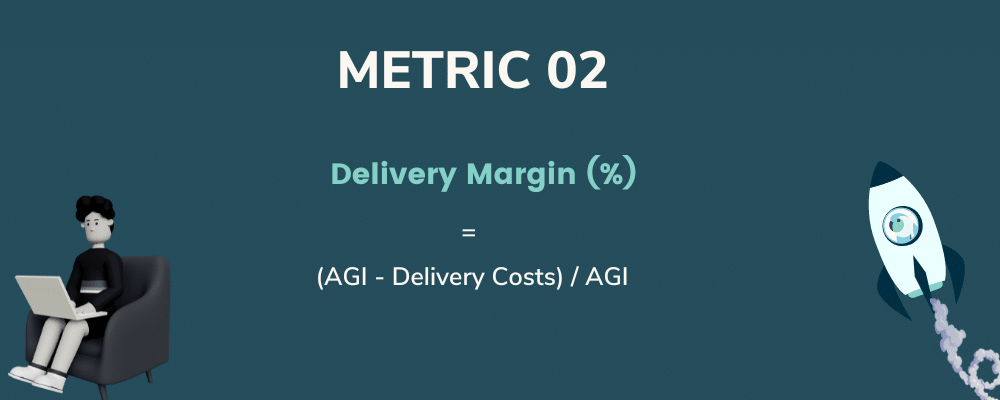
Delivery Margin measures how efficiently your business earns revenue. It’s something almost no agency P&L measures and – in our opinion – is THE MOST important metric on the P&L. Simply put, it’s a metric we spend a lot of time discussing with clients.
The way we arrive at this margin is by subtracting Delivery Costs from AGI. Delivery Costs, in this sense, are the cost of earning revenue and getting work done for clients.
Examples of Delivery Costs include:
- Payroll and Labor costs for those executing delivery work (client work) that is core to your business (not considered pass-through)
- Any delivery costs that can not easily be attributed to a single client project, but are required to enable the work undertaken by your delivery team (i.e. Adobe creative cloud, Figma, Ad Management Tools, Etc.)
One of the key mistakes we see on agency P&Ls is the failure to split things like software and payroll out into accounts that isolate Delivery Costs from Overhead. Often, all payroll and software expenses find themselves in one big account. These need to be manually parsed apart at the transaction level to get any sense of margin.
Benchmarks
So, there are a couple of different lenses by which you can peer into Delivery Margin. One is the agency-wide lens, and here you’re going to want to be hitting 50%-60%+ Delivery Margin.
The other lens is on a per-project basis. In this instance, we’d be looking at 60-70% as being “healthy”.
The reason we set the per-project target higher is to account for the 10-20% drop that typically occurs from the Project-Level to the P&L. This is due mainly to gaps in utilization caused by fluctuations in such things as client work, time off, holidays, sickness, team turnover, etc. as well as the shared delivery expenses above – which we generally see equate to 3-6% of AGI.
A healthy delivery margin is the foundation of your agency’s profitability. Without it, it’s virtually impossible to have a strong bottom line.
In our auditing experience, 9-out-of-10 agencies suffer from under-performance at the delivery margin level. Often, they can reach EBITDA’s of 30%+ without any adjustments to overhead spending, simply by optimizing this number.
If you’d like to learn about the three levers that influence delivery margin – do check out this post.
Calculation
Delivery Profit ($) = AGI – Delivery Costs
Delivery Margin (%) = (AGI – Delivery Costs) / AGI
If you’re interested in modelling what your agency can look like on different levels of Delivery Margin, you should check out the Agency Model Simulator, accessible for free in Parakeeto’s Agency Profit Toolkit:

Get your copy of the Optimization Simulator with much more at the link below!
3. Overhead Spending
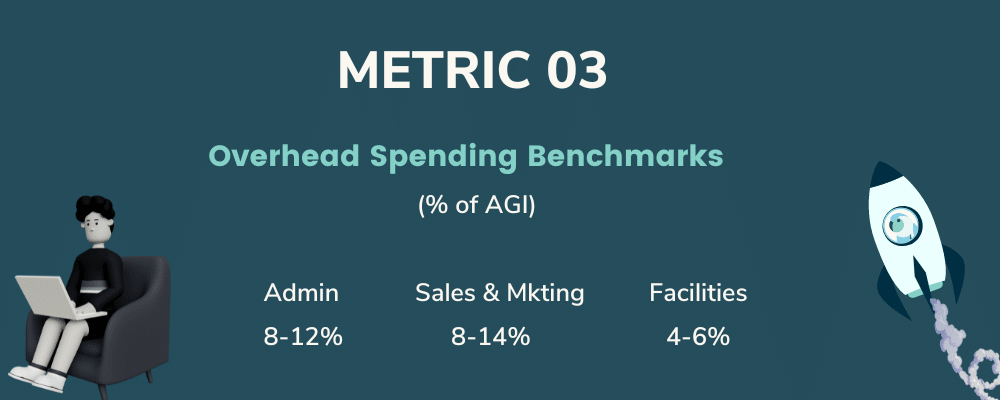
The final key layer of costs is related to what we refer to as “Overhead”. Some clients think of overhead as being strictly related to facilities. We see it as the expenses related to running the business.
For us, these expenses fall into three main categories:
- Sales and Marketing (the cost to acquire new business)
- Administration (the cost to operate the business)
- Facilities (the cost of the working environment for the team, whether on premise or remote)
At the end of the day, what we see as being critically important is the ability to separate overhead expenses from delivery expenses in order to measure Delivery Margin.
The specific breakdown of overhead isn’t a hill we’re going to die on… That said, we’ve been able to benchmark agencies using these three main categories and believe that adopting them can be helpful in understanding how balanced your spending is in each of these areas.
Benchmarks
We typically see overhead spending fall into the following ranges:
- Administration (ideally 8-12% of AGI)
- This is going to be your professional services – such as legal, Xero/QBO subscriptions, postage, etc, plus any administrative payroll.
- Sales & Marketing (ideally 8-14% of AGI)
- This would include any New Biz Dev, payroll costs/commissions for the sales team, plus marketing costs – such as your content pipeline, advertisements, website, etc.
- Facilities (ideally 4-6% of AGI)
- If applicable, they would be your team’s working environment, rent, utilities, etc, alongside any custodial or maintenance staff.
The cumulative number we’re looking at when we put all three buckets together is 20-30% of AGI. You may have a specific context in which your business falls into where you’re spending more on S&M or less on facilities. That said; the general rule of thumb is you’re in good shape if you’re in between the above range.
It’s important to remember that said ranges are simply a reference point. If your agency has strong delivery margin, you may decide – as an owner – to over-invest in sales & marketing to grow faster. You may choose to invest in more administrative spending and staff in order to minimize growing pains, or indeed improve your lifestyle as an owner. All of these decisions are perfectly okay. The key word here is that those should be decisions. They should feel deliberate. If overhead spending is outside of these ranges involuntarily, then more investigation may be required.
Also keep in mind that if your agency suffers from low delivery margin, these percentages may be inflated. For example, if an agency is doing $1M in AGI and spends $400k on overhead, it may seem – at first glance – that they have too much overhead spending for their size (40%).
While technically that may be true, this overhead spending may actually be appropriate for the size of their team. If that business is able to improve its delivery margin, and reach a $1.2M AGI with the same team, their overhead becomes right-sized ($400K is only 30% of $1.2M).
Do keep this in mind as you dig into your financials, and seek opportunities in delivery margin before getting too concerned about overhead spending.
Who to talk to if you’re looking to get this marketing agency financial model in place
After Auditing their accounting system, clients often ask us who they should work with to implement and maintain the changes we recommend. We have a short list of accounting firms we trust with our clients. They see eye-to-eye with us on these concepts and may be open to taking on new clients. At the time of writing this post, these firms include:
- Ramsay Innovations
- We had a chance to sit down with their CEO, Jon Morris, on this episode of the Agency Profit Podcast. Give it a listen if you want to know more about how they work over there!
- Stride Services
- Similarly to above, the founder of this agency – Russell Benaroya – had a chat with our CEO on a recent episode of the #APP where they did a deep dive into Financial visibility.
- Summit CPA’s
- Founder Jody Gruden literally wrote the book on agency KPI’s and was also a guest on the Agency Profit Podcast. Their firm specializes in agency finance and can even incorporate important non-financial metrics into your reports.
- Blumer CPA’s
- Marcel and Jason have done several interviews together over the years, with Blumer specializing in the agency industry for over two decades.

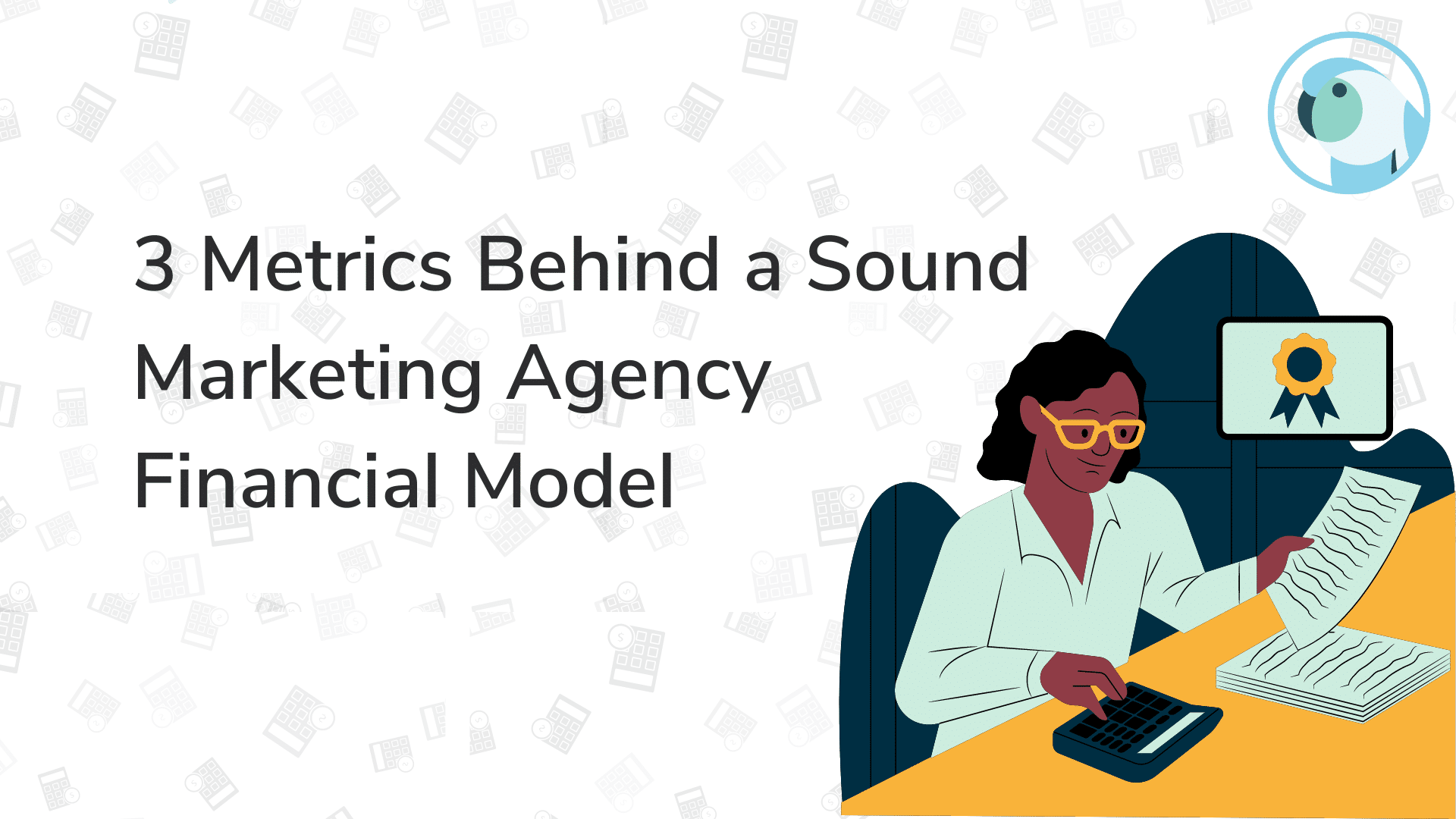


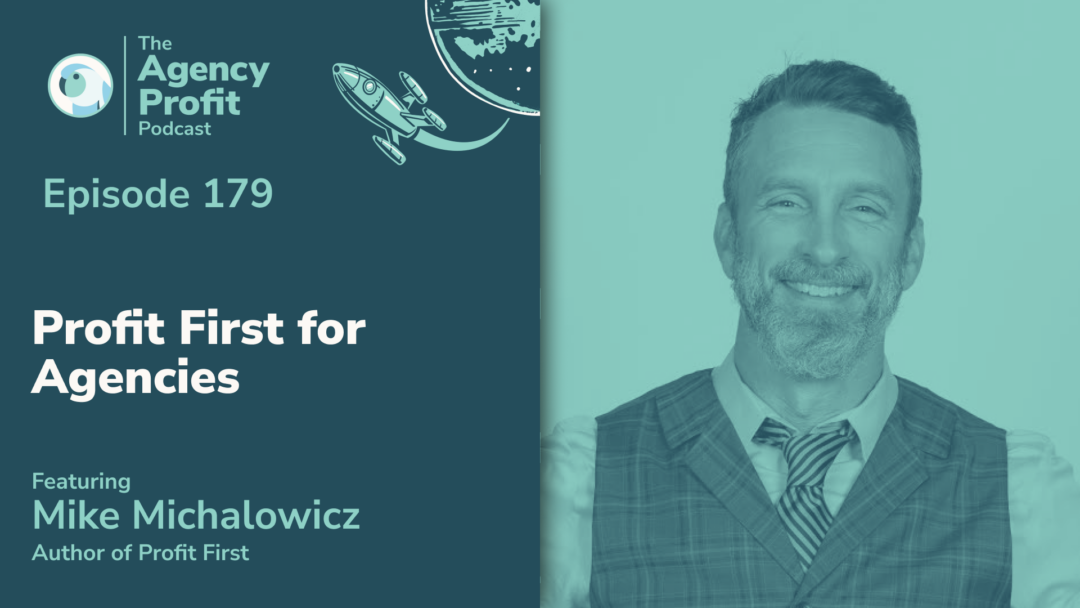

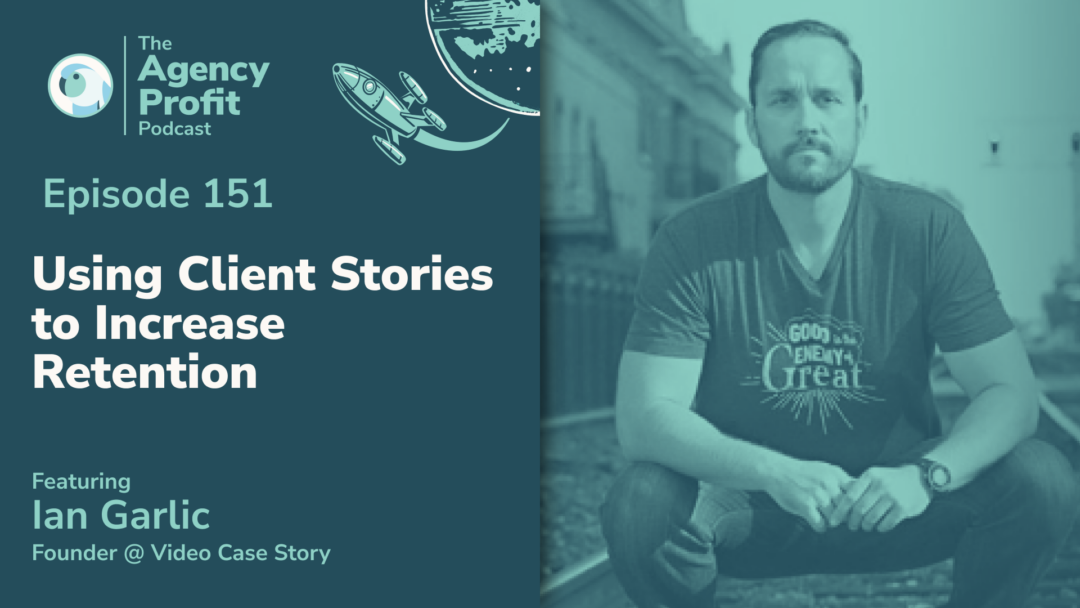

0 Comments